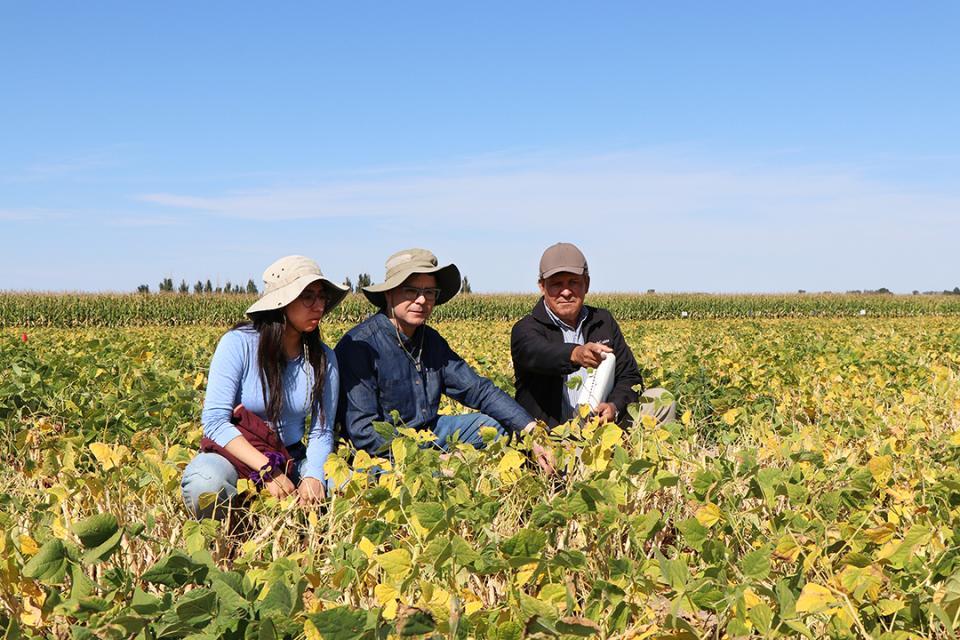
Bean Breeders Scout Fields for Desirable Bean Genetics
The dry bean harvest is underway across the Panhandle. At the University of Nebraska-Lincoln Panhandle Research Extension and Education Center in Scottsbluff, Carlos Urrea, UNL dry bean breeder, has been hand-selecting dry bean plants for research. Urrea and his team go into the fields before harvest and pull out the dry bean plants with desired traits.
“We have been selecting for earliness, plant architecture, and also for common bacterial blight resistance,” he said.
The dry edible beans in Urrea’s plots are fourth generation and include pintos, Great Northern and cranberries. He and his team of undergraduate students and summer workers are threshing the beans. Some of the pods have common bacterial blight. Those beans are rejected if the plant has more than 20% to 30% of blight.
“If they have intermediary maturity or are lying on the ground, they are also rejected,” Urrea said.
The group was joined by Kainyon Tay, head of the legume program in Chile with the National Research Institute of Ministry of Agriculture (INIA), on Sept. 19. He walked some plots with them, picking and choosing quality bean plants.
“I have sent him some Chilean (dry bean) lines, like Tortola. Carlos crosses them with beans that have resistant genes for bean mosaic virus, a disease problem in Chile,” Tay said.
Urrea and Tay are both part of the international nursery, where the breeders shuttle beans back and forth to shorten the breeding process. Chile is one of the nurseries Urrea uses to advance his bean program, so the beans grow by two generations a year.
“It (nurseries) makes the program more efficient,” Urrea said. “This year, we are rejecting about 30% of the lines in the field and not harvesting them.”
The dry beans that make the cut will be sent off to Chile, New Zealand, Australia and Puerto Rico to be grown. In the spring of 2024, the next generation will return to be planted in the Panhandle.
OnlineMaster of Science in Agronomy
With a focus on industry applications and research, the online program is designed with maximum flexibility for today's working professionals.

